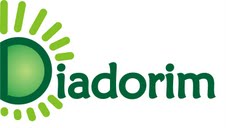Optimization of an Adsorbed Natural Gas System with Phase Change Material using the Topology Optimization Method
DOI:
https://doi.org/10.26512/ripe.v2i28.14457Abstract
Abstract. Natural Gas has been drawing industrial sectors attention as a promising alternative fuel. This solutions attractiveness depends on the quality and efficiency of the storage and transport methods employed. Porous media are known to be an efficient manner to store natural gas by the adsorption mechanism, also known as Adsorbed Natural Gas (ANG). Temperature
exerts significant influence on adsorption efficiency. Studies applying Phase Change Materials (PCM) as heat exchanger in ANG systems suggests the combination improves the vessel capacity and adsorption and desorption rates behavior. In addition, the PCM bodies shape and position inside adsorption systems greatly affects the benefits they bring. For this reason, the
Topology Optimization Method (TOM) is indicated for this problem. The topology optimization method is a versatile tool for material distribution inside a domain and in the last few decades its capabilities of exploring manufacturing process characteristics as well as its implementation have been improved. This study aims to increase the capacity and performance of Adsorbed Natural Gas (ANG) Vessels using TOM to distribute PCM material in the vessel interior. The
physical model consider a coupled heat and mass transfer trough an ANG vessel with PCM in its interior, the boundary conditions are dictated by a pressure input in the vessels extremity and the natural convection on the vessels walls. FEniCS Project libraries are employed in the governing equations implementation and to work the solution for the differential equations and dolphin-adjoint libraries are applied to perform the sensitivities calculus. The project variable for the optimization is defined as the PCM distribution inside the vessel. Thermal properties corrections are performed according to an analytical solution for the phase change problem.Phase change enthalpy corrections are performed in the level of the variational problem to model the phase change phenomena. The amount of heat transferred to the phase change enthalpy dictates the phase composition in the domain. The implementation benefits the topology optimization approach as it maintains the duality between the adsorbent volume to adsorb gas and the PCM volume to store heat. An experimental work from the literature is modelled and
compared to the numerical results for software validation and model properties calibration. As results a 2D ANG vessel optimization is performed, the final topologies are presented and their total adsorption volume and charging/discharging time are compared.
Keywords: Adsorption, Optimization, PCM, ANG, Desorption
Downloads
Downloads
Published
How to Cite
Issue
Section
License
Given the public access policy of the journal, the use of the published texts is free, with the obligation of recognizing the original authorship and the first publication in this journal. The authors of the published contributions are entirely and exclusively responsible for their contents.
1. The authors authorize the publication of the article in this journal.
2. The authors guarantee that the contribution is original, and take full responsibility for its content in case of impugnation by third parties.
3. The authors guarantee that the contribution is not under evaluation in another journal.
4. The authors keep the copyright and convey to the journal the right of first publication, the work being licensed under a Creative Commons Attribution License-BY.
5. The authors are allowed and stimulated to publicize and distribute their work on-line after the publication in the journal.
6. The authors of the approved works authorize the journal to distribute their content, after publication, for reproduction in content indexes, virtual libraries and similars.
7. The editors reserve the right to make adjustments to the text and to adequate the article to the editorial rules of the journal.









